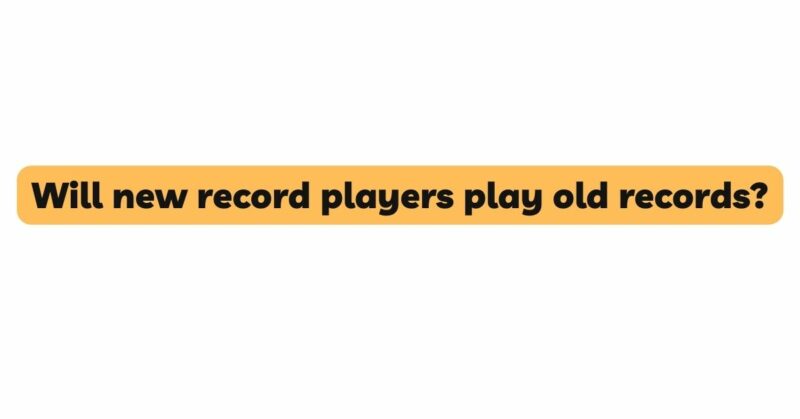The resurgence of vinyl records in recent years has rekindled a deep appreciation for the analog music experience. As enthusiasts of all generations embrace vinyl’s tactile charm, a pertinent question arises: Will new record players play old records? This inquiry delves into the realm of compatibility, exploring the intricacies of the interplay between modern record players and vintage vinyl records. This article aims to shed light on the technical aspects, potential challenges, and strategies for ensuring a harmonious convergence of past and present in the world of vinyl playback.
The Vinyl Renaissance: Old Records in a New Era
Vinyl records, once relegated to the realm of nostalgia, have made an astounding comeback. Their warm, authentic sound and tangible appeal have captivated audiophiles, collectors, and casual music lovers alike. The resurgence of vinyl has been accompanied by a proliferation of new record players, designed to cater to diverse preferences and budgets. Amid this renaissance, questions emerge about whether these modern record players are compatible with the cherished vintage vinyl records of yesteryears.
The Dance of Grooves and Styluses: A Technical Conundrum
The compatibility between new record players and old records is a delicate dance between the grooves etched on the vinyl and the stylus (needle) that traverses them. The grooves contain the audio information encoded during the recording process, with variations in depth and configuration. The stylus’s shape, tracking force, and quality must align with the grooves to ensure accurate playback without damaging the record. Achieving this harmony is essential to preserving both the record’s integrity and the listener’s experience.
Potential Challenges and Considerations
- Stylus Compatibility: Vintage records often have varying groove profiles, necessitating a stylus that matches the specific configuration to avoid damage or distortion during playback.
- Tracking Force: The stylus’s tracking force, the pressure it exerts on the grooves, must be carefully balanced. Incorrect tracking force can lead to excessive wear or skipping.
- Playback Speeds: Vintage records were often recorded at different speeds, such as 78 RPM, while modern turntables typically offer 33 1/3 RPM and 45 RPM options.
- Anti-Skating Mechanisms: Some vintage records may require adjustments to the turntable’s anti-skating mechanism to prevent uneven groove wear.
- Tonearm Adjustments: Accommodating various stylus profiles might involve adjusting the tonearm’s vertical tracking angle and azimuth settings.
Strategies for Seamless Playback
- Research and Identification: Gather information about your vintage records, such as their era of production, intended playback speed, and any special requirements.
- Versatile Styluses: Invest in a high-quality stylus with multiple profiles or adjustable settings to ensure accurate playback of diverse groove configurations.
- Adjustable Turntables: Opt for modern record players with adjustable tonearms, tracking force, anti-skating, and playback speeds to accommodate various vinyl records.
- Expert Recommendations: Seek advice from audiophile communities, vintage record experts, and manufacturer guidelines to navigate compatibility challenges.
- Proper Preservation: Handle vintage records with care, clean them diligently, and store them in optimal conditions to maintain their condition and sound quality.
- Digitization Alternatives: If compatibility proves challenging, consider digitizing vintage records to preserve their sound quality and playing digital copies on your new record player.
Preserving Musical Heritage: Bridging Past and Present
The compatibility of new record players with vintage records represents a fusion of musical eras, celebrating the cherished past while embracing modern technology. Enthusiasts aim to honor the authenticity of analog sound while leveraging the advancements of contemporary record players. This pursuit requires thoughtful research, a commitment to quality, and a deep respect for the sonic heritage embedded in vintage vinyl records.
Conclusion
The question of whether new record players can play old records navigates the convergence of tradition and innovation, analog and digital, past and present. As audiophiles and music lovers seek to create a seamless bridge between these worlds, the pursuit of compatibility serves as an opportunity to preserve the intrinsic value of vinyl records while harnessing the capabilities of modern turntable technology. By understanding the nuances of compatibility, embracing versatile styluses, and employing expert advice, enthusiasts can ensure that vintage vinyl records find a harmonious resonance on their new record players.


